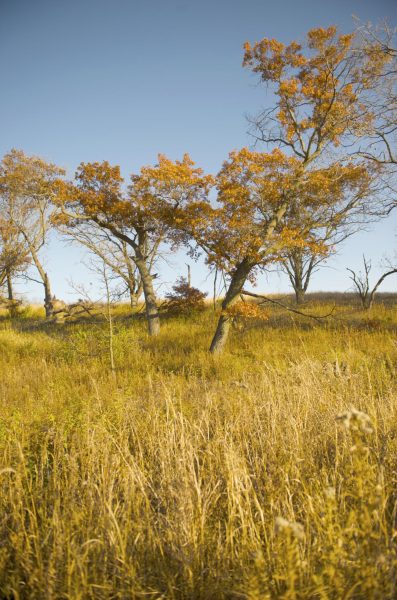Minnesota is divided into many ecological subsections, all within its three primary biomes of prairie, broadleaf forest and coniferous forest. Honing in on the broadleaf forest region in Southeast Minnesota, Carleton is located at the border between the Big Woods and the Oak Savanna subsections within the state, with the Cannon River often being seen as a fire break between the two ecological zones. (See MN Department of Natural Resources Eastern Broadleaf Forest Province webpage).
On the western side of the river, the Big Woods was traditionally a great forest with many wetlands and lakes, primarily composed of American elm, red oak and sugar maple, while today it has become fragmented, with forests widely separated from each other and most of the Big Woods region being farmed. In the northern end of the region, commercial and residential suburban sprawl from the Twin Cities metropolitan area have led to significant changes to the habitat. (MN Department of Natural Resources Big Woods Subsection Overview)
On the eastern side of the Cannon River, where Carleton and Cowling Arboretum lie, it falls in the Oak Savanna region. In contrast to the Big Woods, this part of Minnesota is full of gently rolling hills with interspersed communities of bur oak savanna, tallgrass prairie and maple-basswood forest. (Minnesota Department of Natural Resources Oak Savanna Subsection Overview).
The location of Carleton and the Arb in Minnesota’s oak savanna region has led to the Arb being restored into a mixed habitat with the low lying regions along the Cannon River being maintained as a floodplain forest, the upland region being restored to tallgrass prairie and border zones between the prairie and the floodplain forest often being managed as bur oak savanna. While much of the land that the Arb sits on was previously farmed, there has been a great initiative to incorporate native plant communities that exist in the oak savanna ecoregion during seedings.










